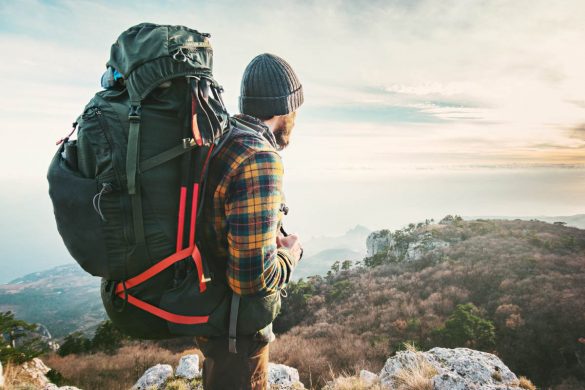This question occupies every beginner before the first trekking tour. Unfortunately, it is also difficult to answer this question without experience. Are 5, 10 or 20 kg okay? What is a good benchmark?
As is so often the case, there is unfortunately noot only one right answer! The weight of the backpack depends on various factors:
- Type and length of the tour
- Your ability to limit yourself
- Your equipment
Let’s start with the type and length of the trek: here, the total length of the trek is not so much the determining factor, but rather where and how you want to sleep and how often you can provide yourself with water and food during the trek.
If you want to stay in huts, you don’t need a tent, a sleeping pad and maybe a lighter sleeping bag is enough. This saves 2 to 2.5 kg quite quickly. Other equipment such as gas stove/gas, pot and mug can possibly be left at home as well.
If you choose a trekking tour away from civilization, you will need to carry not only the above mentioned equipment. You also need to make sure you always have enough food and water with you. The longer the distances between shopping or water points, the more you’ll have to haul. Per day you can expect about 400 to 500 g of food and 3 to 4 l of water. Of course, this always depends on personal needs and climatic conditions. At 35°C in southern Europe you will have a higher water demand than in Norway in autumn.
Depending on the long-distance trail you choose, you may find yourself carrying not only your tent, sleeping bag and sleeping pad, but also a week’s worth of food and several liters of water. This, of course, has a very crucial influence on the overall weight of the backpack. In this case, we should probably not expect less than 15 kg (more likely 17 kg).
Let’s move on to your ability to limit yourself:
On my first trekking tour (Kungsleden with the tent) I had a small book to read, pens and a pad and a reflex camera with interchangeable lens. No wonder the backpack was super heavy.
The dumbest thing you can do is take things you don’t need. This must be avoided at all costs! Therefore, I can only give you the advice to guide yourself with all the packing lists on the Internet and really only deviate from them in exceptional cases. Go through each item in your mind and ask yourself: Do I really need this on my hike of X days? Can’t I do without it? Ultimately, however, only experience helps, of course.
Last but not least, the type of gear you carry is important for the weight of your backpack:
There are almost all equipment in different weight and size and quality categories. The backpack itself, can weigh 500 g, but also 2 kg. It’s exactly the same with the sleeping bag. One-person tents are available from 700 g and less to over 1.5 kg.
You see… this is where you can save quite a bit of weight on your trekking backpack.
The problem is that hardly a beginner buys the entire trekking equipment weight-optimized (ultralight), but first takes existing (often heavier) equipment. Only in the course of time you buy more of the light items.
Putting all this together, we get roughly these ranges for the weight of a trekking backpack:
| approximate weight of the backpack for one week long-distance hiking (without food and drink) | min. (in kg) | max. (in kg) |
| Hut-to-hut trekking tour (not weight optimized): | 5 | 8 |
| Hike with tent (not weight optimized): | 9 | 13 |
| Hut-to-hut trekking tour (weight optimized): | 3 | 5 |
| Hike with tent (weight optimized): | 5 | 9 |
The table is intentionally kept very simple. As I explained above, weight depends on a variety of components. The table is intended only as a guide to the weight range in which backpacks usually stay. If the backpack is heavier, just go through everything again and try to save. Should it be lighter, you have done everything right, or forgotten something 🙂


